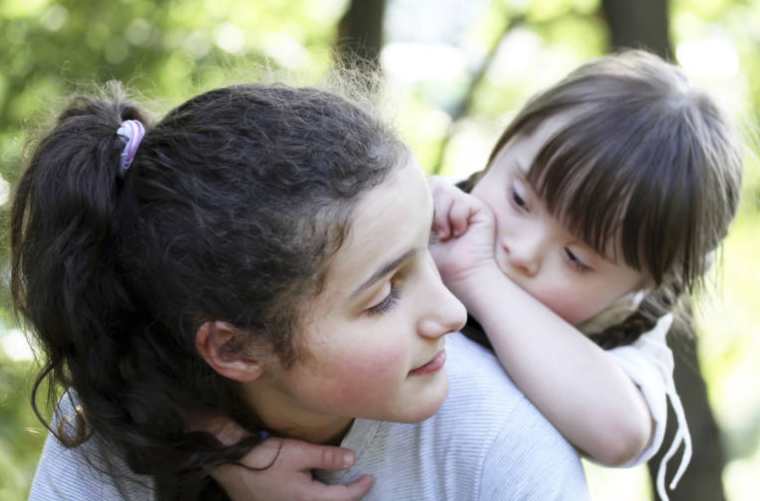ASW
|
|
Like other aspects of modern life, education can make the head hurt. So many outcomes, so much important work to do, so many solutions and strategies, so many variations on teaching, so many different kinds of students with so many different needs, so many unknowns in preparing for 21st Century life and the endless list of jobs that haven’t been invented. What if we discovered one unifying factor that brought all of this confusion under one roof and gave us a coherent sense of how to stimulate the intellect, teach children to engage in collaborative problem solving and creative challenge, and foster social-emotional balance and stability—one factor that, if we got right, would change the equation for learning in the same way that confirming the existence of a fundamental particle informs a grand theory of the universe? That factor exists: It’s called empathy. To make that argument requires a deep dive into the profound nature of empathy. Right now, empathy roughly equates to “I like you and am willing to tolerate you regardless of differences because I am a good person.” But the textbook definition hints at something more profound: It’s ‘the feeling of being able to understand and share another person’s experiences and emotions.’ That all-encompassing definition means empathy results from a complex mix of other meaningful emotions and attitudes that fuel human personality, such as openness, curiosity, self-restraint, vulnerability, sensitivity, awareness, respect, appreciation, and even love. Add this list to the fact that empathy can’t manifest unless we have had our own experiences and emotions to contrast, compare, and connect with others—and we can see that empathy is more than a simple connector; it’s the subterranean, fundamental glue that holds humanity together. Thus, it shouldn’t surprise us that such a potent emotion resonates across mind and body, influencing behavior and brain function. That is exactly the case. Empathy has the potential to open up students to deeper learning, drive clarity of thinking, and inspire engagement with the world—in other words, provide the emotional sustenance for outstanding human performance. I see this regularly in my work with project-based-learning teachers who create classrooms that hum with good vibes and focused work. But to understand the full potential of empathy, let’s connect some dots. Those dots may appear unrelated at the moment, but they constitute a scatterplot with a trend line, predicting that empathy will eventually not be an add-on or ‘soft’ skill or one component of a middle school advisory program, and in the process confirm that a school system focused on cognition and testing alone cannot bring forth the greater purpose, focus, collaboration, and creativity necessary for 21st century students. I see seven ‘dots’, if you will, that begin to paint this emerging picture of schooling in the future: Empathy underlies collaboration As social-emotional learning becomes more necessary to help students navigate life and work, empathy is getting more popular by the day, for good reason: Empathy lies at the heart of 21st century skillfulness in teamwork, collaboration and communication in a diverse world. Speaking or listening to someone without radiating empathy narrows the channel of communication or blocks connection altogether. Particularly in the new reality of a global world, without empathy you’re not ready to engage the 21st century, either in the workplace or across cultures. It has to be taught, practiced and coached. Empathy is healthy In the last twenty years, discussions about emotions have taken a radical turn. For years, negative emotions dominated theory and research. Today we know that positive emotions enhance well-being, health, relationships and personal strengths. At the top of this pyramid are the emotions associated with empathy: curiosity, openness, appreciation and gratitude. Empathy simply powers up the mind, body and spirit. Empathy promotes whole-child learning A critical dot, overlooked in our brain-centric world, is that empathy may activate the heart. As I’ve written many times, the heart has a role in learning equal to the brain. In fact, science does not support the mistaken notion that the brain does all the work. Research on heart rate variability and emotions shows that the heart engages the brain in constant conversation, using the language of emotions to direct the ‘state’ of the brain. To perform its role, the heart contains upwards of 40,000 neurons identical to nerve cells in the brain; eighty percent of nerve traffic then travels upward from heart to brain, making it clear that the heart influences brain function. While we don’t fully understand the implications of this partnership, two findings have been confirmed: Anxiety and negative feelings alter the coding of the messages sent by the heart to the brain, resulting in stress or fight or flight responses; at the same time, positive emotions such as gratitude and appreciation—close cousins of empathy—show pronounced, positive effects on brain processes. Empathy ‘opens’ us up The frontal lobes of the brain, at least as much as we know now, are the seat of planning, execution, problem solving and creativity—and when the frontal lobes are working well, so are we. In that well-documented ‘flow state,’ humans function at their peak, moving into a whole-body feeling of openness, relaxed focus, and creative possibility. If we know empathy activates the frontal lobes, why can’t we imagine intentional lessons about empathy and openness designed to put students in an optimal state for learning? Empathy powers up inquiry and project based learning Instruction is clearly headed in the direction of student-centered approaches such as inquiry and PBL. These approaches succeed in an atmosphere of care and positive relationships, both between student and teacher, and student and student. Classrooms that lack this foundation cannot succeed at project based work or open-ended questioning that relies on students’ ability to care about their learning. Setting up a culture of care is very much an exercise in making empathy central to daily work. Empathy triggers creativity Beyond rounding out the skills of collaboration and communication, empathy, design and collaboration are interconnected pieces of the creative puzzle. Empathy is now identified as the first step in the design process, whether crafting new software for a user or creating form-factors that inherently please the consumer. Right now, empathy is described as ‘step.’ But that easy designation belies a very deep process in which a designer must, for lack of a better term, ‘sink into the mind of another and take on their persona’. That is a deep descriptor of an ultimate form of empathy—and it may be a necessary component of an educational system increasingly tilted toward design and inquiry. Empathy unites The list could have started here, but on a planet that is now close to completing the globalizing process, empathy assumes a special role as the key emotion critical for seven-plus billion people to live in harmony and cooperative relationship. For our Stone-Age brethren, fear and separation were appropriate mechanisms for survival. But that has been flipped by sheer numbers, technology, resource scarcity, and environmental impact. Empathy is required curriculum, and without it, eventually our current focus on high test scores and fulfilling college requirements will be rendered meaningless by untoward events. The takeaway? Ready or not, education is entering an age in which social learning is the new norm. Pure academics are giving way to increased opportunities for students to work together; teachers increasingly take on the role of co-learner and facilitator; listening, learning, and teaming are the new core skills. At the heart of this new skillfulness for everyone is the ability to forge deep connections lead to creative problem solving and positive pursuits. Taken all together, this makes empathy critical to schools. In fact, very soon we will need to invent a new taxonomy of learning that makes empathy the base of the learning pyramid. Thom Markham, founder and CEO of PBL Global, is an author, psychologist and international school consultant who has assisted over 300 schools and 6000 teachers across five continents in implementing project-based learning, 21st century competencies, social-emotional growth and successful inquiry-based systems of teaching and learning. Article Link: https://ww2.kqed.org/mindshift/2016/11/16/why-empathy-holds-the-key-to-transforming-21st-century-learning/?utm_campaign=crowdfire&utm_content=crowdfire&utm_medium=social&utm_source=twitter
0 Comments
Leave a Reply. |


 RSS Feed
RSS Feed
